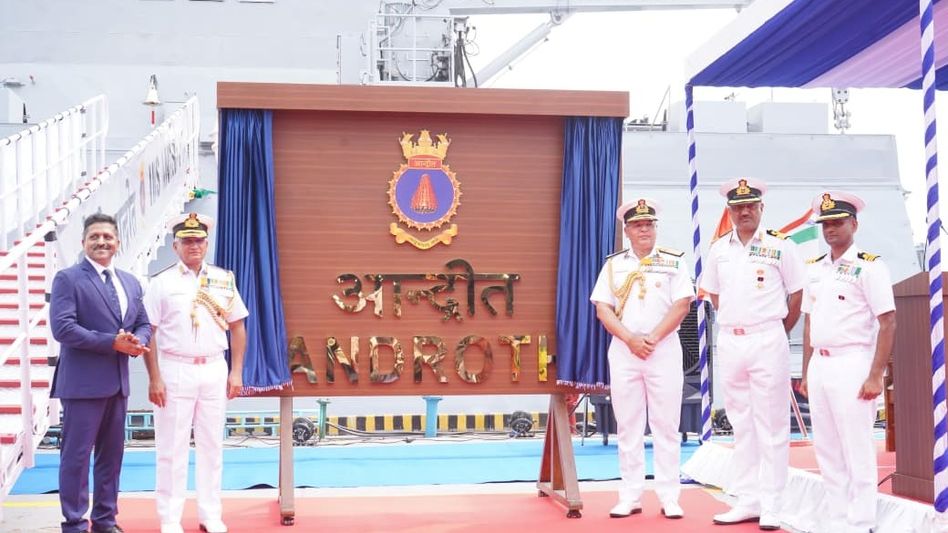Indian Coast Guard conducts 10th NATPOLREX-X and 27th NOSDCP meet off Chennai coast
The Indian Coast Guard (ICG) successfully concluded the 10th National Level Pollution Response Exercise (NATPOLREX-X) and the 27th National Oil Spill Disaster Contingency Plan (NOSDCP) & Preparedness Meeting off the coast of Chennai, Tamil Nadu, from October 5–6, 2025.

The Indian Coast Guard (ICG) successfully concluded the 10th National Level Pollution Response Exercise (NATPOLREX-X) and the 27th National Oil Spill Disaster Contingency Plan (NOSDCP) & Preparedness Meeting off the coast of Chennai, Tamil Nadu, from October 5–6, 2025.
The large-scale biennial exercise witnessed the participation of 40 foreign observers from 32 countries and over 105 national delegates, emphasizing India’s leadership in marine environmental protection and disaster management. The exercise aimed to enhance inter-agency coordination, operational readiness, and national preparedness to respond effectively to marine oil spills in line with the NOSDCP framework.
A major highlight of this edition was the first-ever shoreline clean-up drill at Marina Beach, conducted jointly by the Greater Chennai Corporation, Tamil Nadu State Pollution Control Board, State Disaster Management Authority, Police, and other local agencies. The drill simulated a real-time oil spill scenario to test response efficiency at the coastal level.
The ICG deployed a range of advanced assets during the exercise, including Pollution Control Vessels (PCVs), Offshore Patrol Vessels (OPVs), Fast Patrol Vessels (FPVs), and Chetak and Dornier aircraft for aerial surveillance and pollution assessment.
The event was supervised by Director General (DG) of the Indian Coast Guard and Chairperson, NOSDCP, DG Paramesh Sivamani, who reviewed the operational synergy and readiness of participating agencies. Representatives from central ministries, coastal states, major ports, oil handling facilities, and maritime organizations took part in the coordinated demonstration.
The technical sessions of NATPOLREX-X featured expert discussions on pressing topics, including Nurdle Spills and their Environmental Impact, Case Studies on Hazardous and Noxious Substances (HNS), Post-Spill Monitoring & Environmental Impact Assessments, and Shoreline Cleanup Operations following the MV MSC ELSA 3 Incident. These sessions served as a key platform for exchanging knowledge between environmental scientists, policymakers, and operational experts.
In line with Prime Minister Narendra Modi’s vision of Aatmanirbhar Bharat, the exercise showcased India’s progress in indigenous maritime technology under the Make in India initiative. Several stakeholders, including major ports and oil agencies, utilized domestically developed equipment, reaffirming the nation’s growing self-reliance in pollution response mechanisms.
Entrusted with the responsibility of protecting India’s marine environment since March 1986, the ICG continues to function as the Central Coordinating Authority for oil spill response. The NOSDCP, formulated by the ICG and approved in 1993, remains the cornerstone of India’s oil spill preparedness framework. To operationalize the plan, the Coast Guard has established four Pollution Response Centres at Mumbai, Chennai, Port Blair, and Vadinar.
Given that over 75% of India’s energy demand is met through seaborne oil imports, maintaining a robust and well-coordinated oil spill response mechanism holds critical strategic importance. NATPOLREX-X not only reaffirmed India’s steadfast commitment to marine ecosystem preservation but also strengthened international collaboration in pollution response and environmental safety.
Copyright©2025 Living Media India Limited. For reprint rights: Syndications Today









